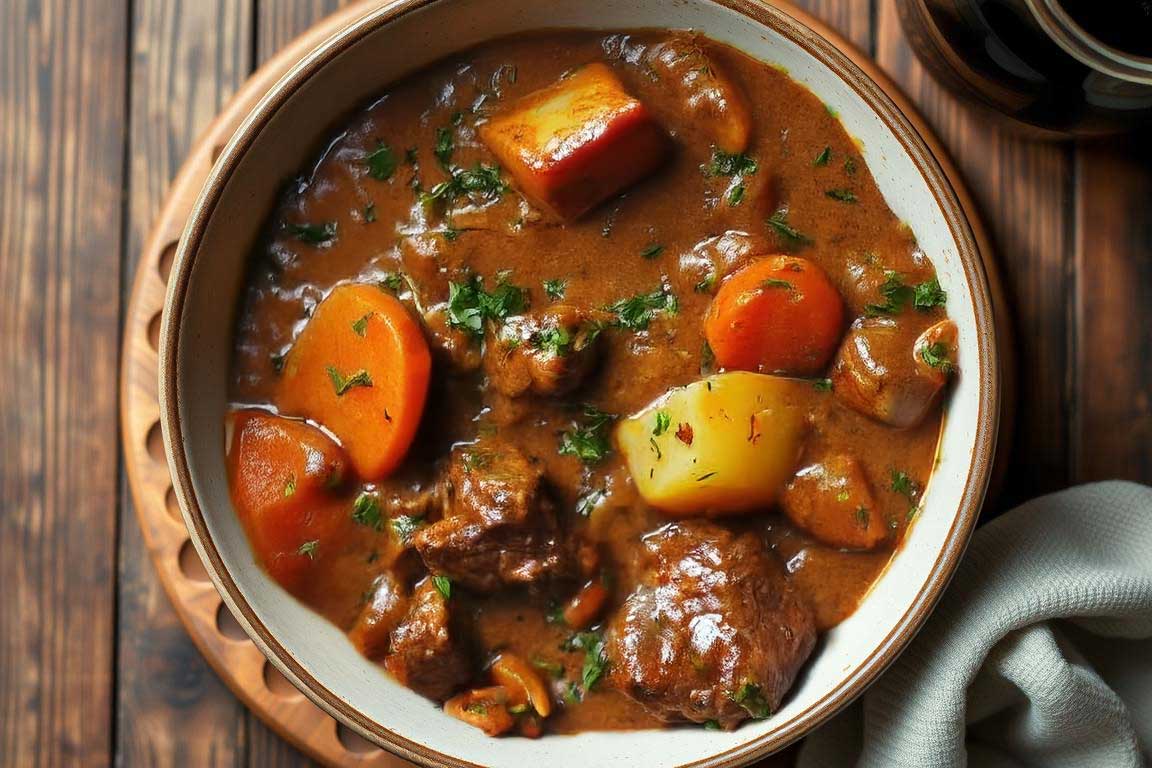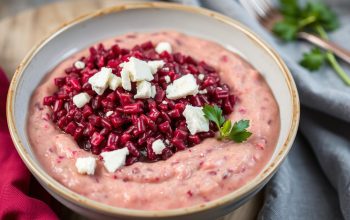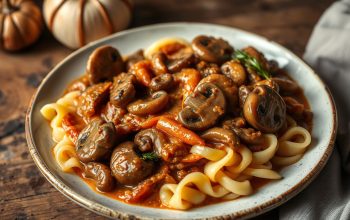Get ready for a culinary masterpiece. It combines beef stew’s comfort with bacon’s smoky taste and dark ale’s depth. This dish shows how simple, quality ingredients can create something amazing.
Beef stew is a favorite worldwide, perfect for cold days. Adding a dark ale makes it even better. It brings a bold flavor that makes the dish unforgettable.
This stew is perfect for a family dinner or a cozy night with friends. It’s sure to become a favorite. It’s a journey into the world of hearty beef recipes and comfort food.
History and Origins of Traditional Beef Stew
Beef stew has a rich history, starting in medieval Europe. It’s a classic dish that has changed over time. Different cultures have added their own twist to this beloved recipe.
Evolution from Medieval Cooking Methods
In the Middle Ages, both peasants and nobles made beef stew. They used tough meat and slow cooking to make it tender. They added vegetables, herbs, and liquid to make a filling meal for families or armies.
Regional Variations Across Cultures
- In France, the boeuf bourguignon is known for its red wine and mushroom flavors.
- Ireland’s Irish beef stew uses Guinness or dark ales for a unique taste.
- Eastern European dishes, like those from Russia and Poland, include potatoes, carrots, and onions.
Impact of Dark Ale in Traditional Stewing
Dark ales, like stouts or porters, have greatly influenced beef stew. They add complex flavors and help tenderize the meat. This combination is key to many traditional beef stew recipes, making them richer and more savory.
Essential Ingredients for the Perfect Beef & Bacon Combination
Making the best beef recipes and meat stews begins with picking the right ingredients. For Beef & Bacon Stew, key elements come together to make a dish that’s both warm and full of flavor.
The base of this stew is a cut of beef like chuck or short rib. These cuts are tough but get tender when cooked slowly. They add a deep beefy taste to the stew. The bacon, thick and smoky, adds flavor and helps make the meat tender.
Vegetables like onions, carrots, and celery add sweetness and depth. They balance the rich flavors of the beef and bacon. Herbs and spices, like thyme and black pepper, enhance the stew’s taste, mixing earthy and peppery notes.
When these ingredients are cooked just right, they create a hearty meal that pleases everyone. The secret to this dish is how each part works together. Together, they make a truly outstanding beef recipes and meat stew.
“The perfect beef recipes and meat stews are all about balancing flavors and textures, and this Beef & Bacon Stew is a master class in that art.”
Selecting the Right Dark Ale for Your Stew
Choosing the right dark ale is key to a perfect beef stew. These strong brews add a unique flavor and warmth to the dish. They make the stew a true winter warmer.
Best Beer Styles for Cooking
For the best stew, pick a rich, malty porter or a smooth stout. They bring out caramel, chocolate, and coffee flavors. Belgian-style dubbel or quad adds fruity and spicy notes.
How Ale Affects Flavor Profile
The dark ale you choose changes the stew’s color and taste. Porters and stouts give a chocolatey taste. Belgian ales add sweetness and spice. Try different beers to find your favorite.
Alcohol Content Considerations
Think about the beer’s alcohol when adding it to your stew. Beers over 7% can taste too boozy. Choose a beer with 5-7% alcohol for a balanced flavor.
“The right dark ale can transform a good beef stew into a truly exceptional culinary experience.”
Beef Stew: Mastering the Basic Techniques
Making the perfect beef stew is an art that needs a good grasp of basic techniques. Whether you’re making a big beef recipes for the family or trying out tasty slow cooker dishes, knowing the basics is key. It helps you make a rich, flavorful dish in just one pot.
The first step is to brown the beef right. This step locks in juices and creates a deep, caramelized crust. This crust adds a lot of flavor to the stew. By searing the meat in batches, you get even browning and avoid a watery stew.
Then, deglazing the pan is important. After browning the beef, use a flavorful liquid like dark ale to get all the browned bits from the pan. This simple step adds a deep flavor to the stew, making it even better.
Preparing the vegetables is also key. Cutting them the same size helps them cook evenly. Add the bigger veggies like carrots and potatoes early. Add the smaller ones like peas or leafy greens later to keep their color and texture.
The final step is slow cooking. Letting the stew simmer for a long time is what makes it great. It lets the flavors mix and the beef get tender. This slow cooking is the secret to a comforting, one-pot meals that everyone will love.
“Slow and steady wins the race when it comes to beef stew. The long, gentle cooking time is what truly transforms a good stew into a masterpiece.”
By learning these basic techniques, you’ll be on your way to making amazing beef recipes. They will impress your guests and warm their hearts.
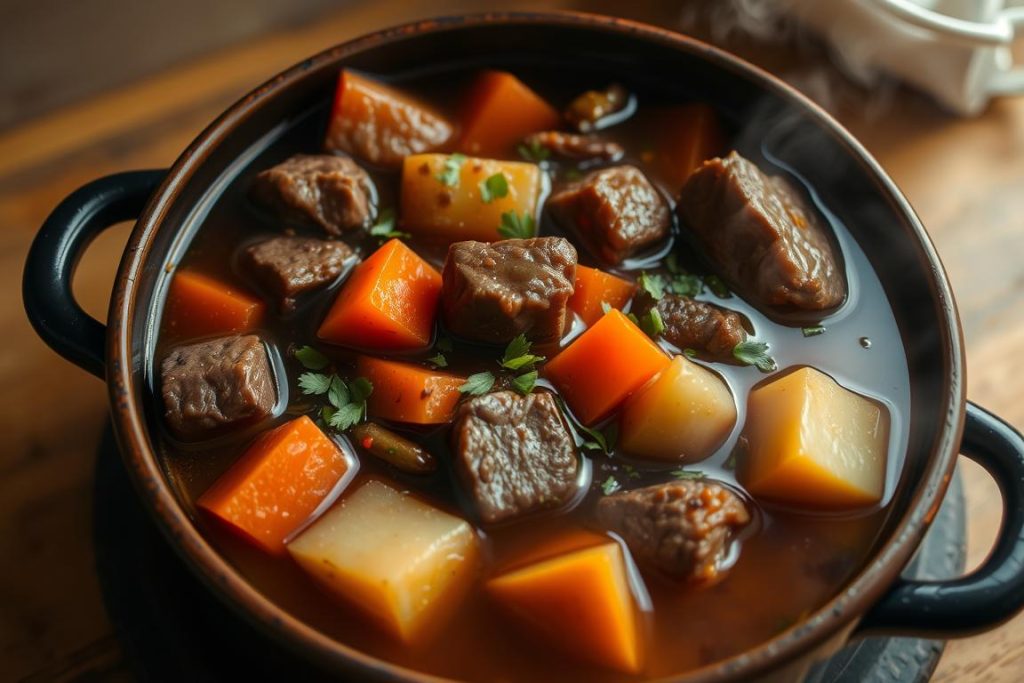
The Art of Bacon Integration and Rendering
Creating a great beef stew involves mastering bacon integration and rendering. Bacon adds flavor and texture, making the meal special. Let’s look at how to use bacon to make your beef stew even better.
Proper Bacon Cutting Techniques
How you cut bacon affects its role in the stew. Here are some tips for the best results:
- Choose thick-cut bacon to keep its texture during cooking.
- Cut bacon into 1/2-inch pieces for even flavor distribution in your hearty meals.
- If using slab bacon, dice it for better flavor spread.
Maximizing Bacon Flavor
To get the most flavor from bacon, focus on the rendering process. Follow these steps for a delicious comfort food:
- Cook bacon in a large pot or Dutch oven over medium heat. This slow cooking prevents burning and helps the fat render.
- Remove crispy bacon pieces once a lot of fat has been released. This fat is key for the stew’s flavor.
- Add the bacon pieces back into the stew later. This keeps their texture and adds a nice contrast to the beef.
Mastering bacon integration and rendering opens up a world of flavor. It makes your beef stew a standout among hearty meals and comfort food.
Step-by-Step Cooking Process and Timeline
Creating a delicious beef recipes like Beef & Bacon Stew with Dark Ale is a fun journey. It needs careful attention to every detail. Let’s explore the step-by-step guide to make sure your slow cooker dishes and one-pot meals are perfect every time.
- First, collect all the ingredients and tools you need. This includes top-quality beef, thick-cut bacon, veggies, and dark ale.
- Start by searing the beef in batches. This step adds flavor and keeps the juices in.
- Then, cook the bacon in the same pan. Let the fat melt and the bacon get crispy. Save the cooked bacon for later.
- Next, cook the onions, carrots, and celery in the bacon fat. Stir them now and then until they’re soft and smell great.
- Use the dark ale to deglaze the pan. This gets all the tasty bits from the bottom. It makes the stew’s flavor richer.
- Add the seared beef, saved bacon, and other ingredients like beef broth, tomato paste, and spices.
- Cover the pot and let it simmer for 2-3 hours. This makes the beef tender and the flavors blend well.
- In the last 30 minutes, taste and adjust the seasoning. Also, thicken the stew to your liking.
By following these steps and timing, you’ll get a flavorful beef recipes that will wow your loved ones. Enjoy your homemade slow cooker dishes and one-pot meals with pride!
“The secret to the perfect beef stew lies in the patient simmering and the careful integration of each ingredient.”
| Cooking Step | Estimated Time |
|---|---|
| Searing the beef | 15-20 minutes |
| Rendering the bacon | 10-15 minutes |
| Sautéing the vegetables | 10-15 minutes |
| Simmering the stew | 2-3 hours |
| Adjusting the seasoning and thickening | 30 minutes |
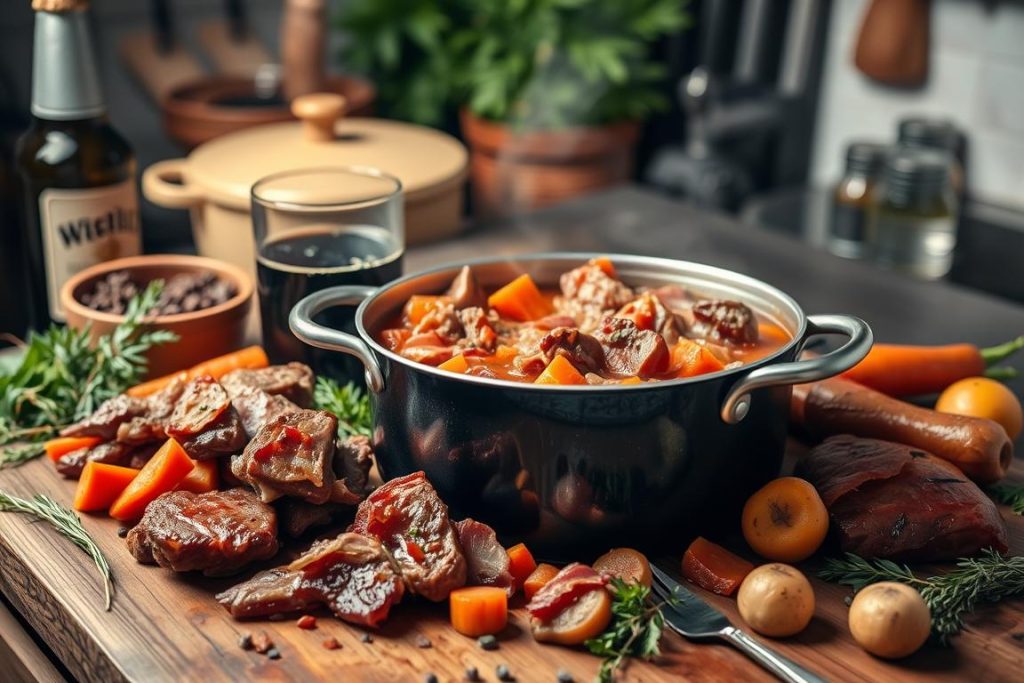
Remember, the key to perfecting this beef recipes, slow cooker dishes, and one-pot meals is patience and attention to detail. Each step adds to the flavor and makes the dish satisfying.
Tips for Achieving the Perfect Consistency
Getting the right consistency is key to a great beef stew. You might want it thick and hearty or smooth and velvety. There are ways to make it just right.
Thickening Methods
One way to thicken stew is with a roux. Mix flour and fat, like butter or oil. Add a bit of flour towards the end to thicken. Or, use a cornstarch slurry by mixing cornstarch with cold water or broth, then adding it to the stew.
Another method is to puree some cooked veggies or meat and mix it back in. This adds body and flavor. Or, let the stew simmer uncovered to reduce the liquid.
Troubleshooting Common Issues
If your stew is too thin, don’t worry. Use a thickening method or add bread crumbs or mashed potatoes. If it’s too thick, add more broth or water.
Tough meat is another issue. Use the right cut, like chuck or shoulder, and cook it long enough. If it’s still tough, simmer longer or use a slow cooker.
With these tips, you’ll make a delicious beef stew that will please everyone.
| Thickening Method | How It Works | Benefits |
|---|---|---|
| Roux | A mixture of flour and fat, whisked into the stew towards the end of cooking | Gradually thickens the broth, adds body and richness |
| Cornstarch Slurry | Cornstarch mixed with cold water or broth, then stirred into the stew | Provides a smooth, velvety texture without affecting the flavor |
| Vegetable/Meat Puree | Pureeing a portion of the cooked ingredients and stirring back into the stew | Enhances both texture and flavor, adds depth |
| Simmering Uncovered | Letting the stew simmer without a lid to allow the liquid to reduce | Simple and hands-off, concentrates the flavors |
Remember, finding the perfect consistency takes practice and knowing your techniques. With a bit of effort, you’ll make a stew that looks and tastes amazing.
Serving Suggestions and Accompaniments
The Beef & Bacon Stew is a hearty, comforting dish. It pairs well with many accompaniments. Try serving it with crusty bread, like rustic sourdough or flaky biscuits, to soak up the broth.
For a complete meal, add a simple salad or steamed vegetables. They balance the stew’s richness. Garnish with fresh parsley or thyme for a pop of color.
For a cozy touch, serve the stew over egg noodles or mashed potatoes. The tender beef, savory bacon, and ale broth make it satisfying. Leftovers are great for meal-prepping or freezing.
